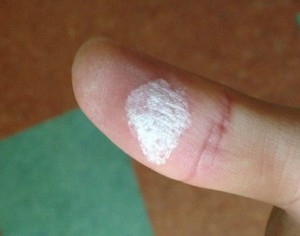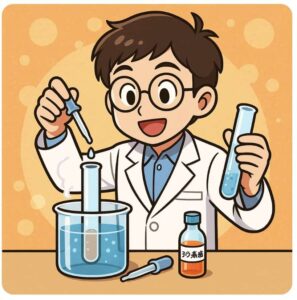The Science Show Sensation! Find the Best Recipe for Elephant’s Toothpaste! 🐘
Hi there, I’m Ken Kuwako, a science trainer. Let’s enjoy the wonders of science together on this site!
【This article is also available as a radio broadcast!】
【Read this article in English】
Have you ever heard of the experiment known as “Elephant’s Toothpaste“? When the experiment begins, a massive amount of foamy bubbles erupts, as if a giant tube of toothpaste is being squeezed out. It’s a truly impactful and visually stunning experiment that’s a big hit in science classes and at science shows.
Click here for the slides created by our Science Club.
This time, I performed the “Elephant’s Toothpaste” experiment with my students. What kind of reaction happens? See for yourself in the video below!
To make our science show a success, we carefully considered the safest and most optimal proportions to get the “Elephant’s Toothpaste” to expand well. Hydrogen peroxide constantly breaks down into oxygen and water, which is why it is stored in a refrigerator. However, without any help, the reaction rate is said to be extremely slow.
In this experiment, by adding potassium iodide (KI) to hydrogen peroxide (H₂O₂), oxygen is rapidly produced, creating a huge amount of foam. The potassium iodide acts as a catalyst, instantly accelerating the decomposition of hydrogen peroxide. The chemical reaction equation is as follows:
The reaction equation seems to be as follows:
In other words, it’s this:
2H2O2 → 2H2O + O2
The size and speed of the foam change depending on the concentration and amount of hydrogen peroxide used. The higher the concentration of hydrogen peroxide, the faster the reaction and the more dramatic the foam produced. However, if the reaction is too intense, it becomes difficult to control, making the proper proportions tricky. We conducted the experiment while keeping safety in mind.
This chemical reaction is also exothermic, and you will notice that the foam and the container become warm to the touch after the experiment. Beyond the visual impact, it’s a great way to learn about chemical concepts like reaction heat and catalysts.
Specific Experiment Methods
We tried three methods.
1. Using 50mL of Hydrogen Peroxide and Dissolving 3 Tablespoons of Potassium Iodide in 50mL of Hot Water
Take 50mL of hydrogen peroxide in a 500mL Erlenmeyer flask and add dish soap and food coloring if you want to add color. Place this inside a container, then add the potassium iodide dissolved in water (3 tablespoons from a lab spoon).

When you add the potassium iodide, oxygen is rapidly produced, and thanks to the dish soap, soap bubbles are formed.
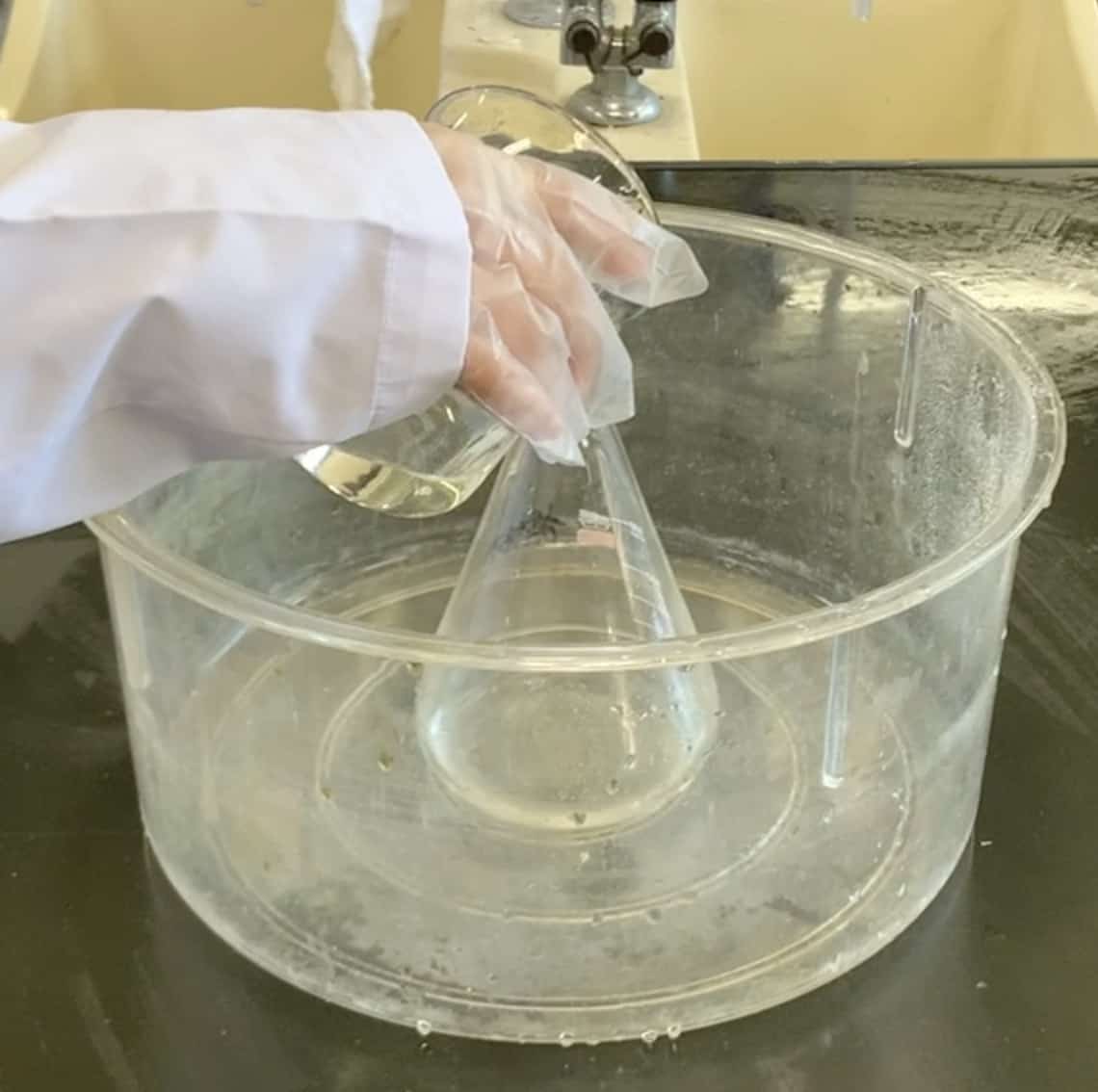

With 50mL, the foam comes out and fills the container. The amount of foam is determined by the amount of hydrogen peroxide.
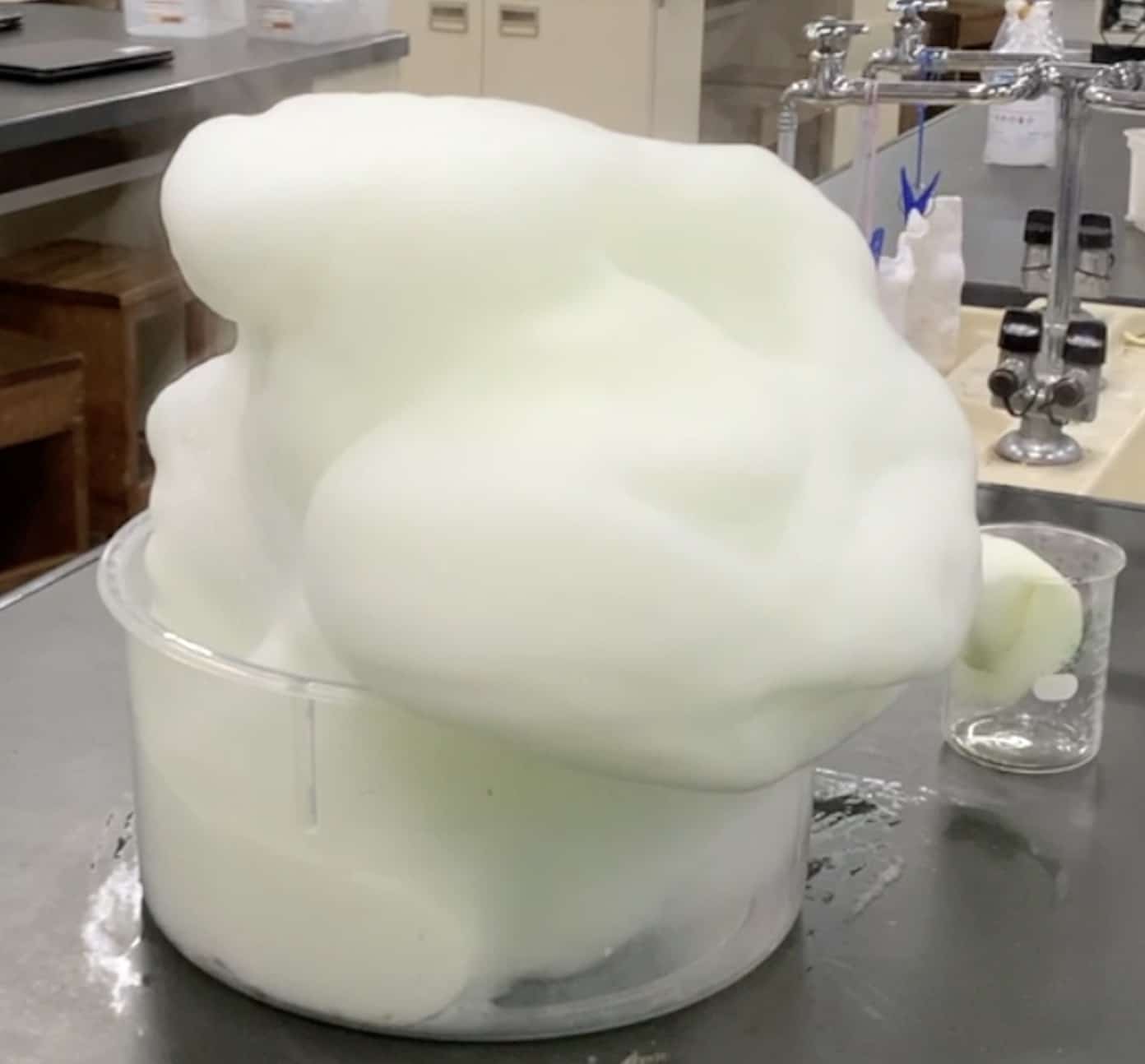
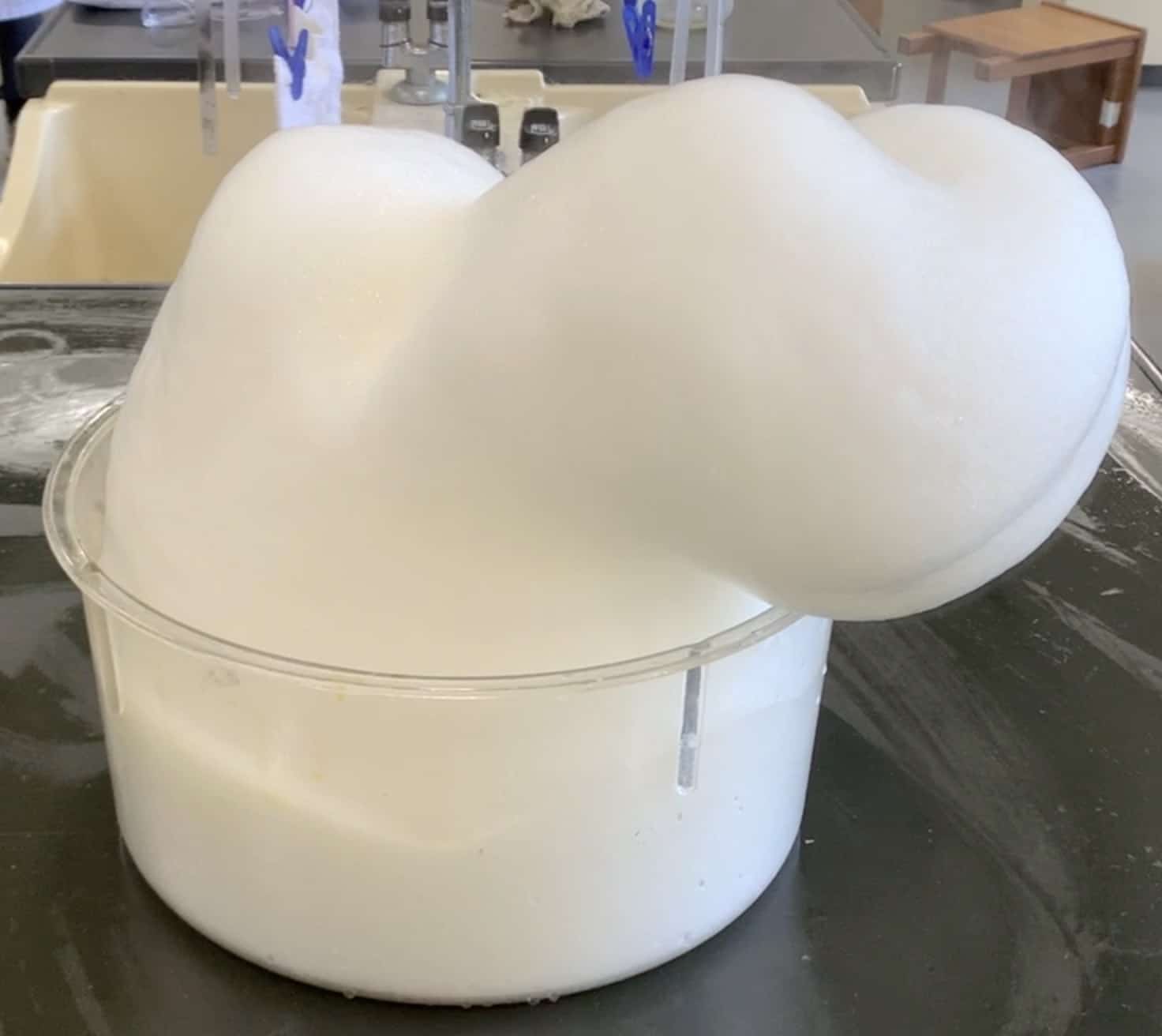
Reference: Using 50mL of Hydrogen Peroxide and Adding 3 Tablespoons of Potassium Iodide Without Dissolving It
When potassium iodide was added as a solid without dissolving it in water, it reacted like a ‘snake firework’. The reaction rate was slower, and we could observe the reaction for a longer period.

Also, be careful if you perform the experiment without soap, as the reaction will be more violent and the solution will splatter. When we took a small amount of hydrogen peroxide (about 5mL) in a graduated cylinder and added a little potassium iodide (one scoop from the smaller lab spoon), then inserted a lit incense stick after the reaction started, the incense stick flared up, as if oxygen was being produced.
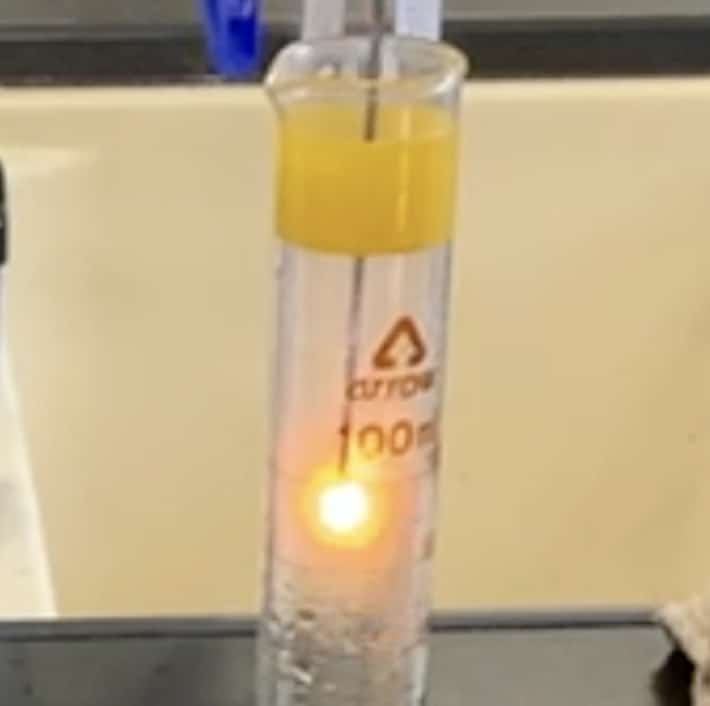
2. Using 200mL of Hydrogen Peroxide and Dissolving 6 Tablespoons of Potassium Iodide in 50mL of Hot Water
We added 200mL of hydrogen peroxide and potassium iodide (6 tablespoons from a lab spoon) dissolved in 50mL of hot water. Here’s how it looked:
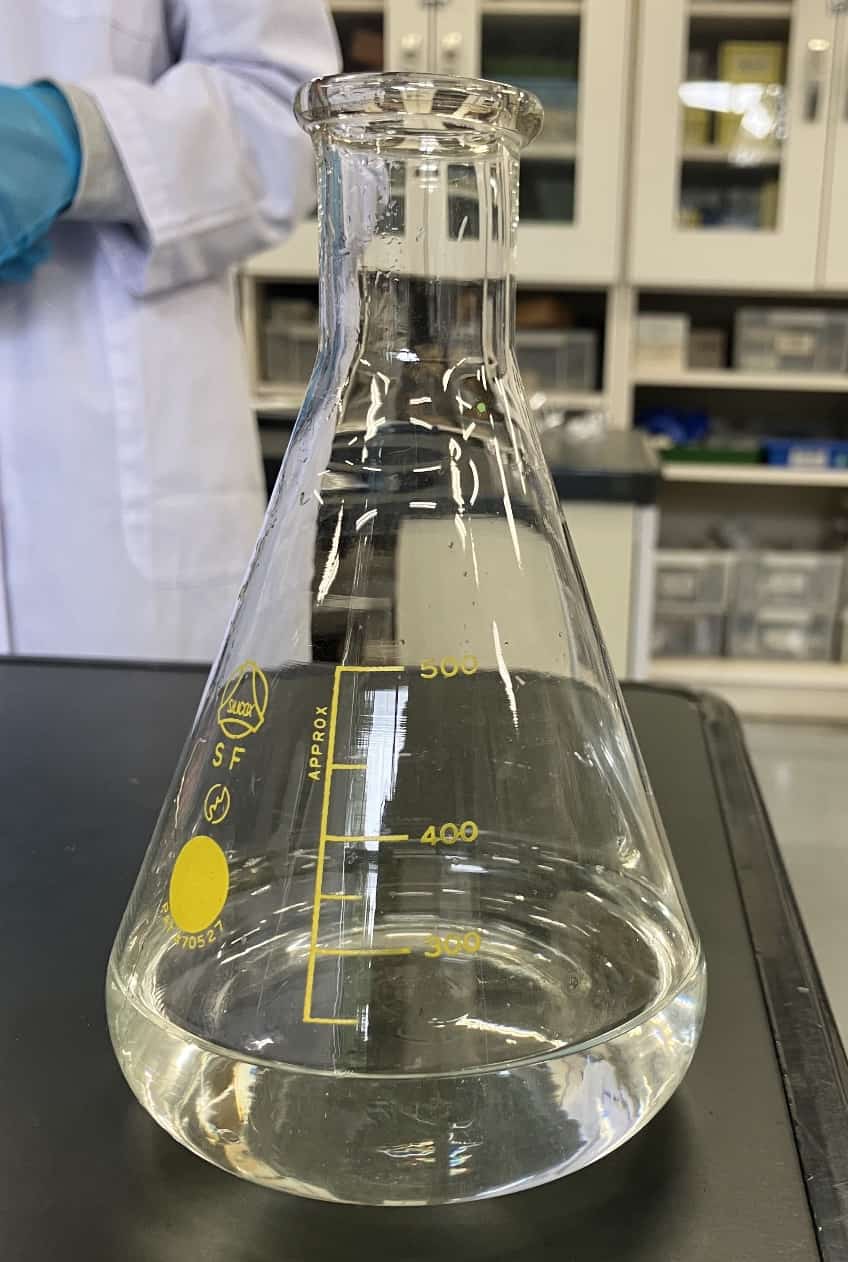
200mL of hydrogen peroxide
It spread all over the desk.
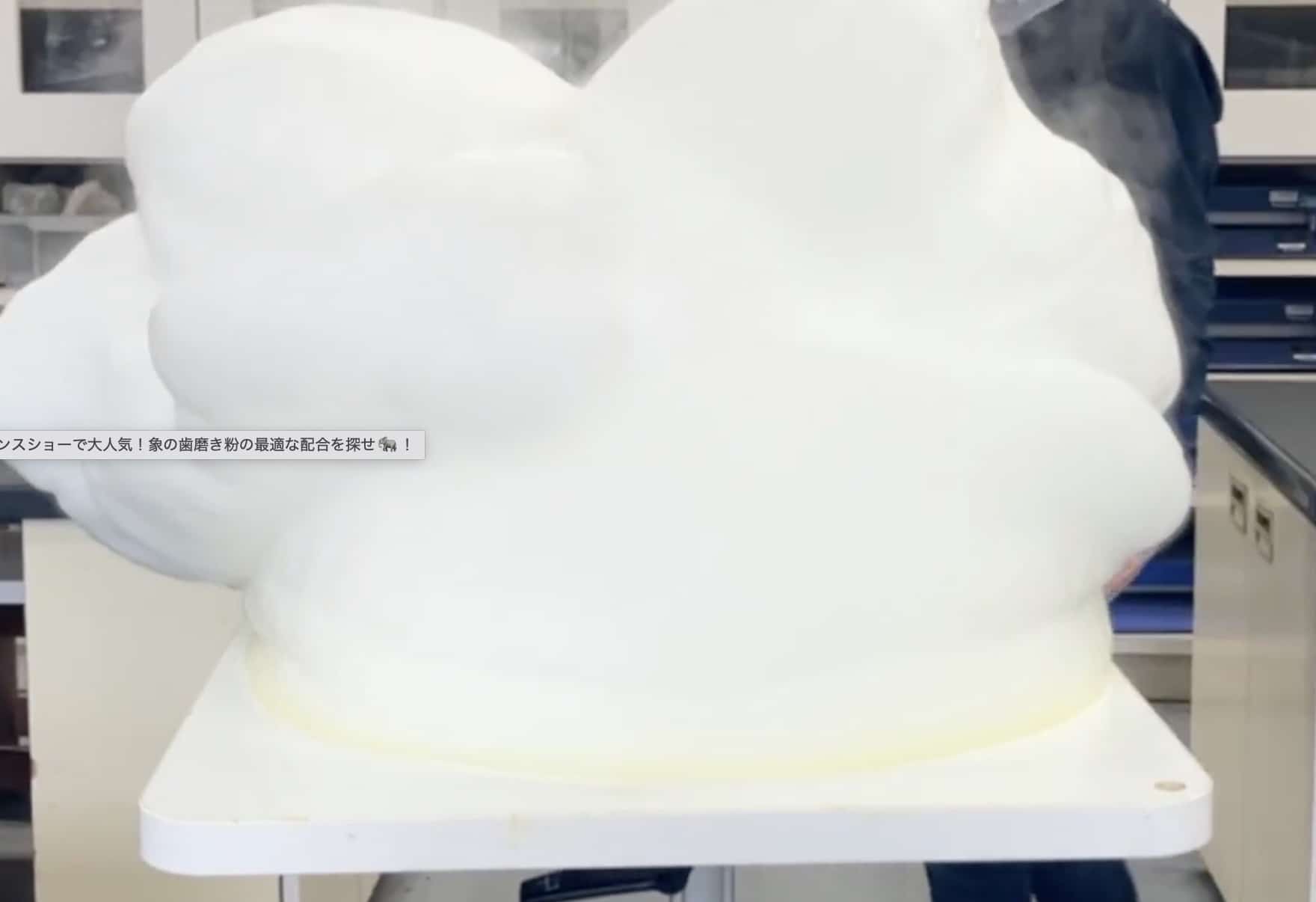
I think this was a pretty good amount. However, I regret that I might have used a little too much water to dissolve the potassium iodide.
3. Using 200mL of Hydrogen Peroxide and Dissolving 6 Tablespoons of Potassium Iodide in 30mL of Hot Water
We added 200mL of hydrogen peroxide and potassium iodide (6 tablespoons from a lab spoon) dissolved in 30mL of hot water. Here’s how it looked:
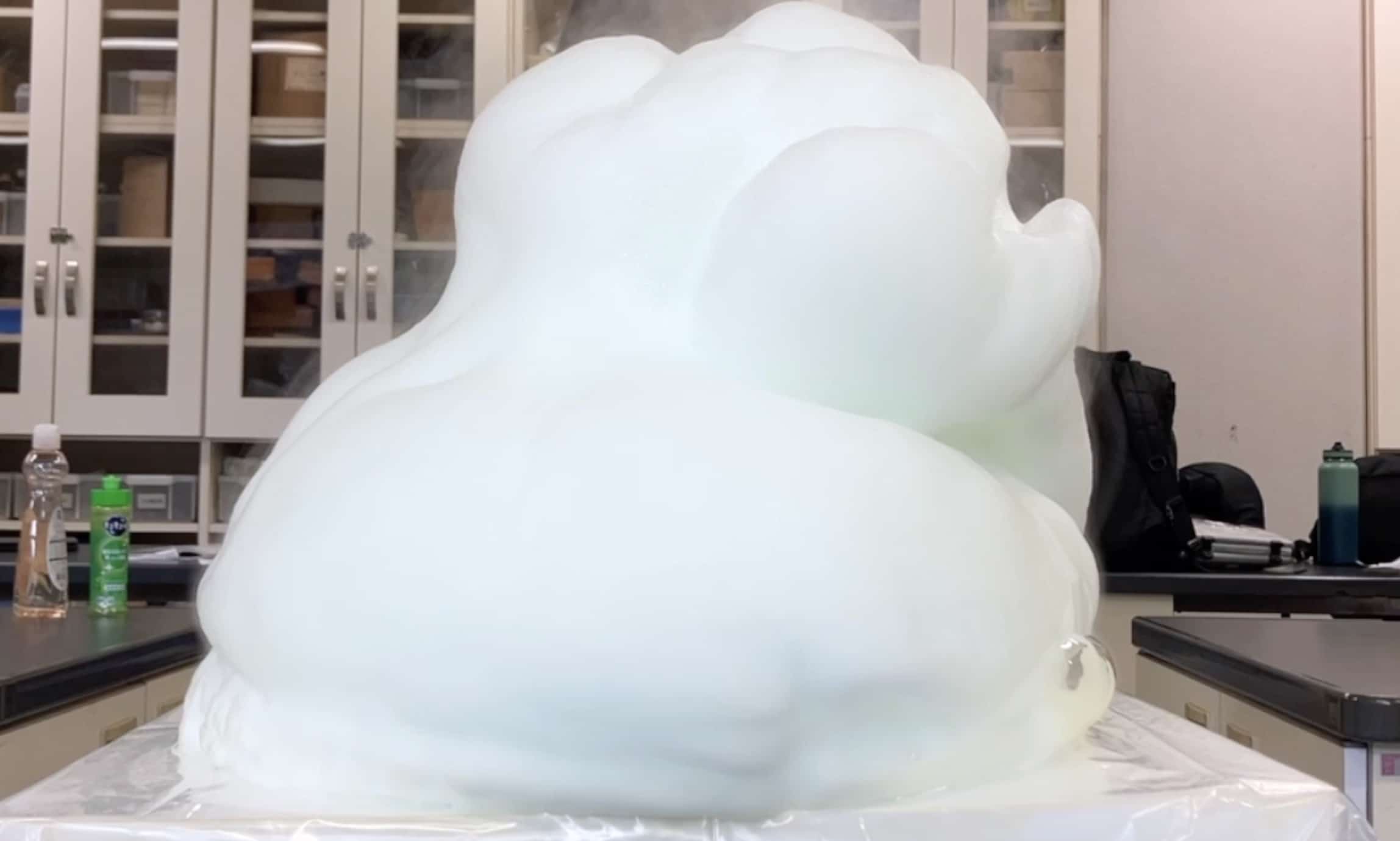
It still covered the entire desk, as expected.
The dish soap we used was this one from Kyukyutto.
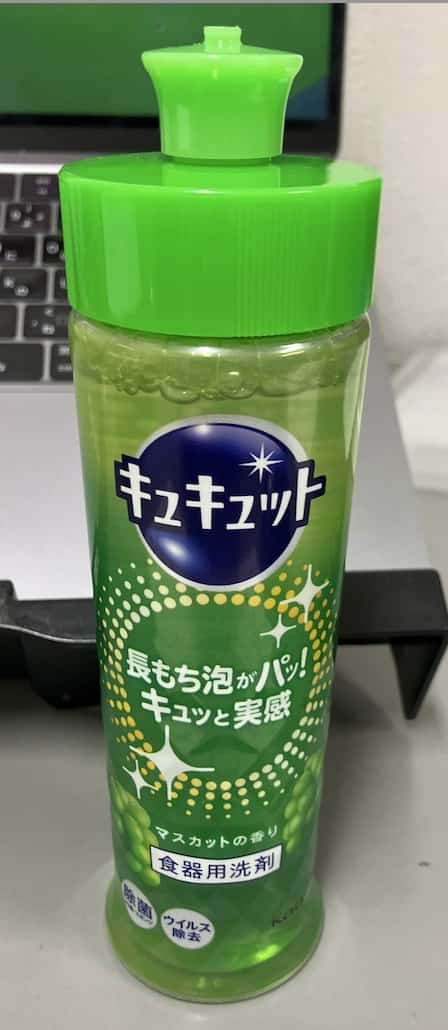
A diluted version of hydrogen peroxide is known as ‘Oxy-dol’ (or hydrogen peroxide solution), which is fine. However, high-concentration hydrogen peroxide is dangerous if it comes into contact with your skin. You’ll be tempted to touch the foam, but this is also dangerous. Your skin will turn white and sting for a day. Don’t forget to wear gloves, a lab coat, and safety goggles. It’s best if the teacher handles the cleanup.
I actually touched it while cleaning up. My skin changed color to white. Also, absolutely do not touch the foam that is produced after the experiment. Touching this foam also causes a stinging sensation. Please be careful.
As you can see, touching it will discolor your skin. This is a photo of my own hand after I touched it. A real-life human experiment. The stinging lasted for a long time.
Contact and Requests
Bringing the wonders and fun of science closer to you! We’ve put together fun science experiments you can do at home and the tips for doing them in an easy-to-understand way. Please feel free to browse!
・About the operator, Ken Kuwako: click here
・For various requests (writing, lectures, experiment workshops, TV supervision, appearances, etc.): click here
・Article updates are posted on X!
![]() The Science Neta Channel features experiment videos!
The Science Neta Channel features experiment videos!


